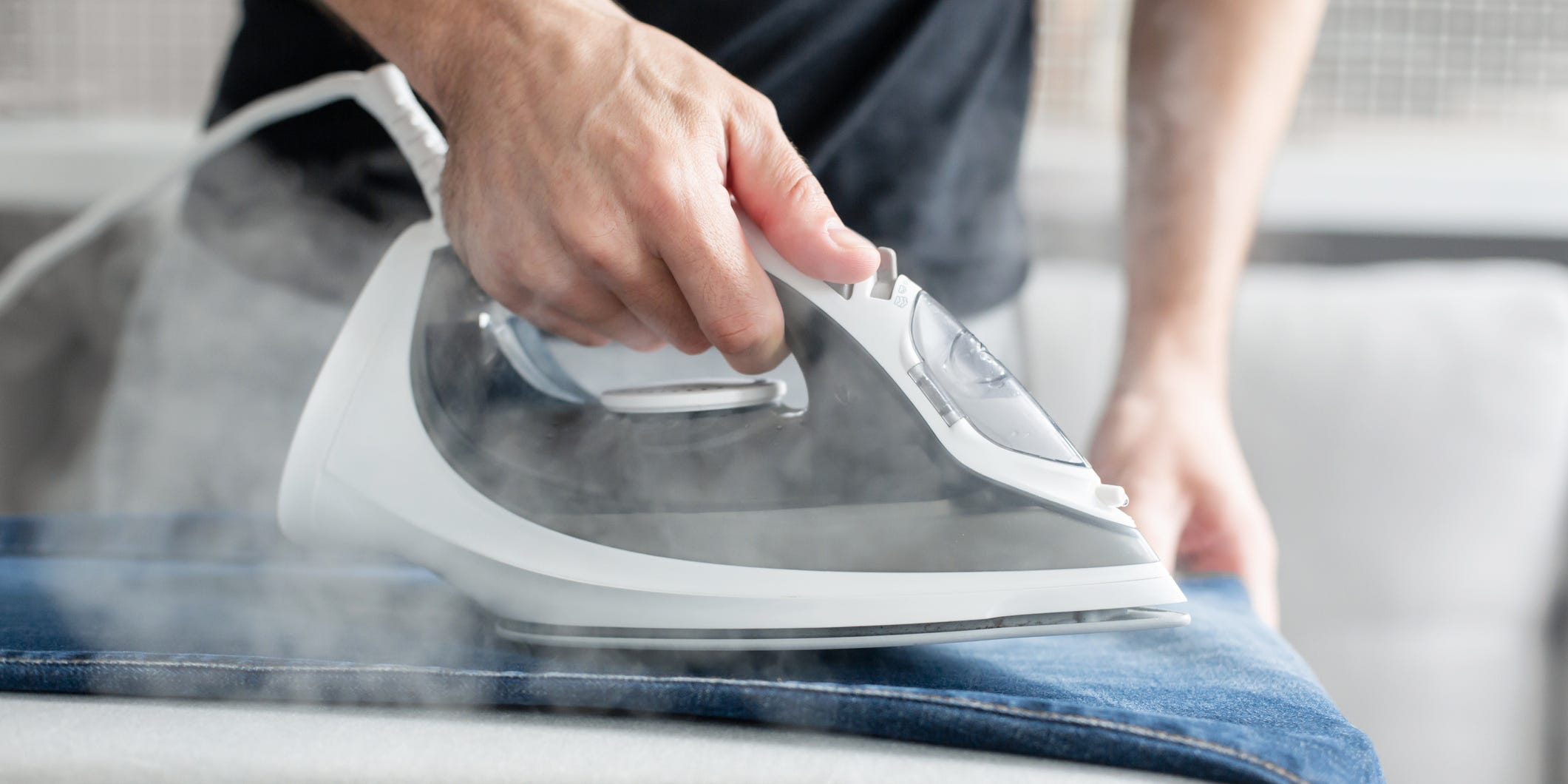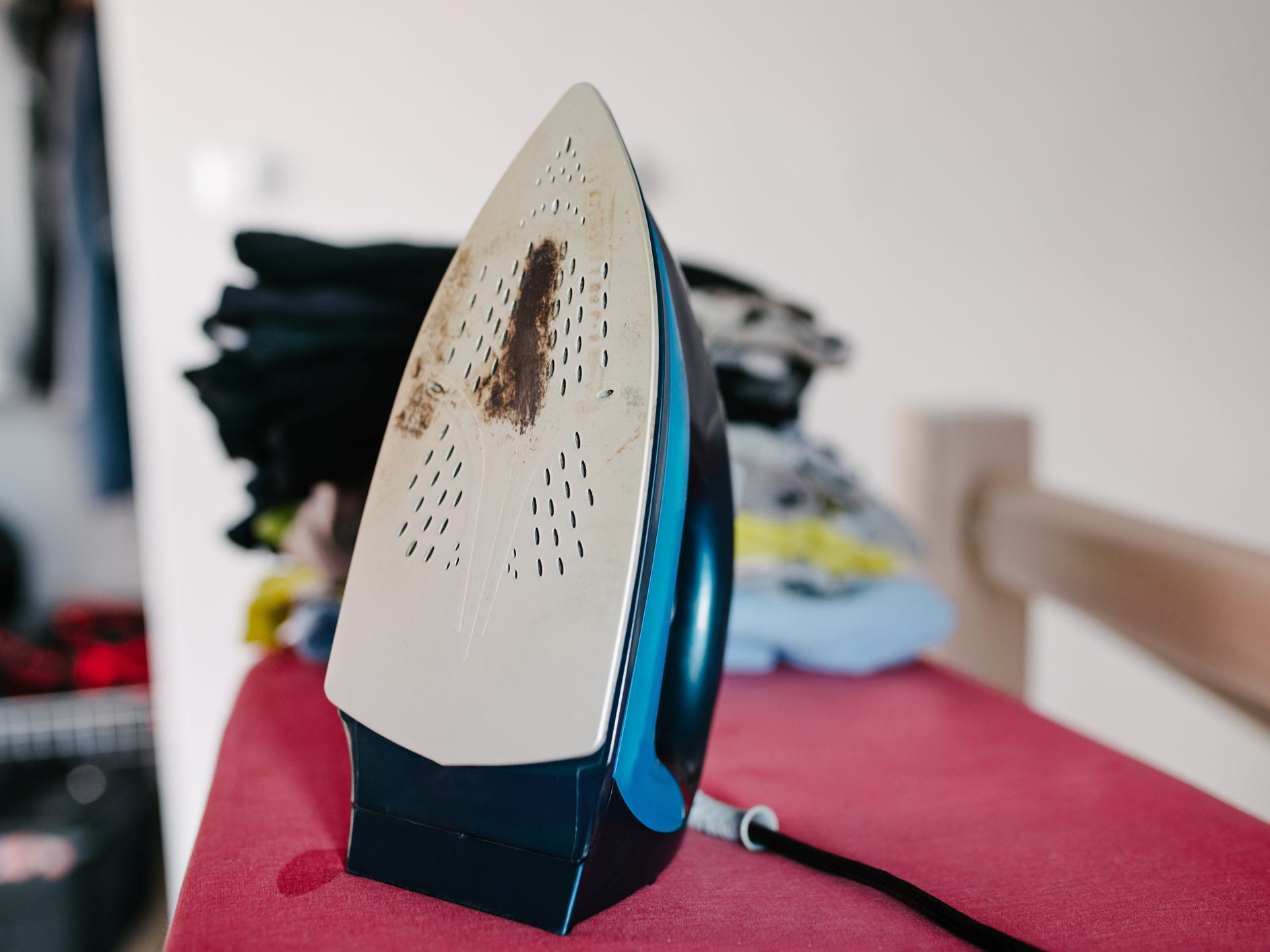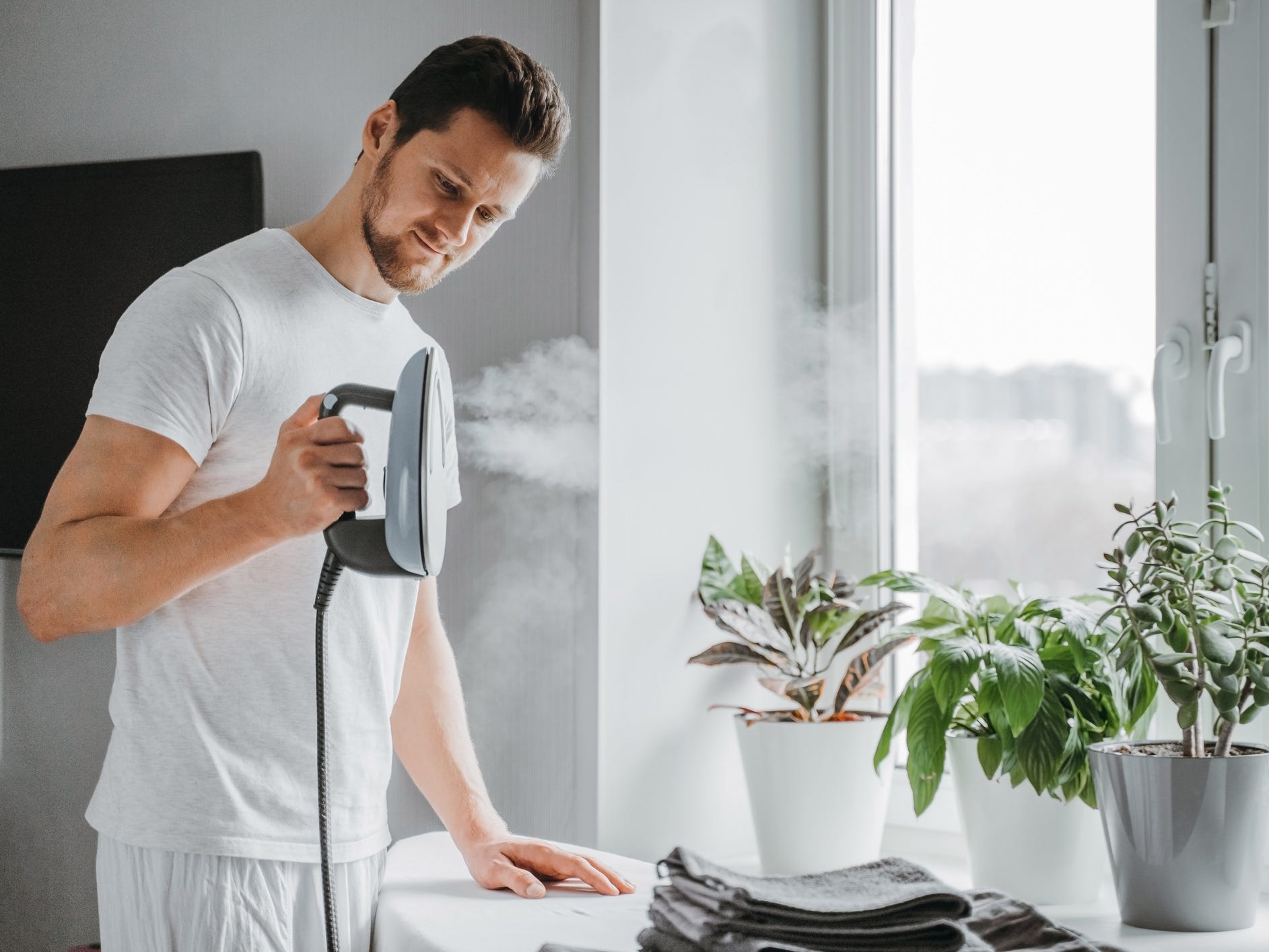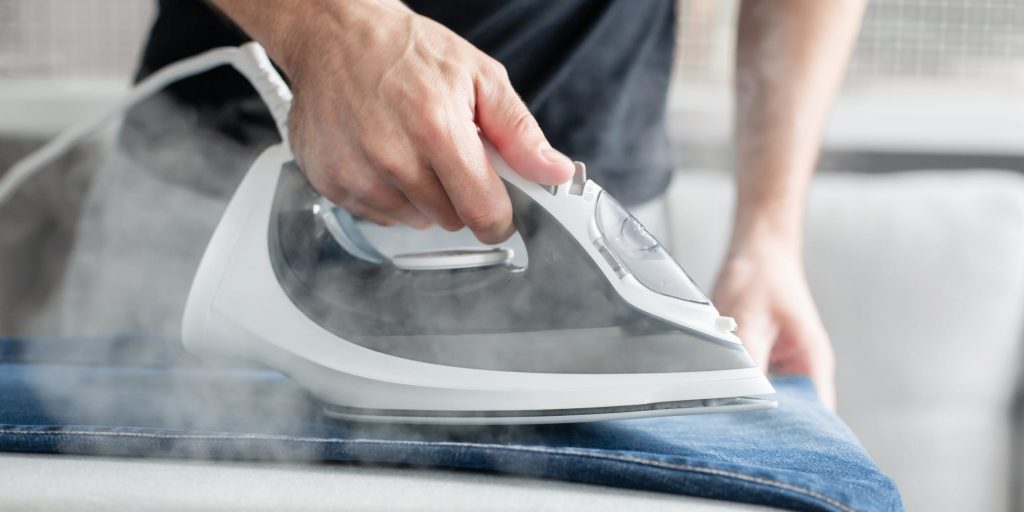
- Both the metal soleplate and the steam chamber should be cleaned regularly to prevent staining.
- Clean the soleplate with a paste of baking soda and water or another gentle abrasive like salt.
- To clean the reservoir, fill it with a solution of distilled water and vinegar and let it steam.
- Visit Insider's Home & Kitchen Reference library for more stories.
Ironing is not usually the most exciting thing to do, and it can be even worse if your iron is sticking to clothes, spraying dirty water, sputtering steam, or just is not at its best.
With a little bit of love and care and a few expert tips and tricks, you can rescue your iron from melted fabrics, hard water stains, and jammed steam chambers, making ironing much easier and efficient.
Former professional dry-cleaner owners and operators for over 35 years, Anil and Nazneen Mulji share some advice on effective and economical ways to clean your iron.
How to clean a scorched soleplate

A soleplate refers to the flat metal surface at the bottom of an iron that comes into direct contact with clothing. Soleplates can stain quite easily from melting or burning fabrics or the build-up of grit and rust.
Keeping the soleplate clean helps it glide smoothly across your garments without causing any damage. Luckily, many of the cleaning remedies use items you likely already have in your pantry.
1. Baking soda paste
Baking soda is a household superhero for its ability to clean nearly anything — including an iron. It easily dissolves grease and serves as a mild abrasive to scour away stains.
For stuck-on residue caused by burnt fabric, simply combine two parts baking soda and one part water to form a paste. Gently spread this paste around the iron plate, being careful not to deposit any in the steam holes. If this does occur, insert a cotton swab into the steam holes to remove the paste and any other grime.
Lightly scrub the metal surface with a damp cloth, then allow the paste to sit for five to 10 minutes. Wipe away with a damp cloth.
2. Newspaper and salt
Once you have finished with your morning coffee and newspaper, you can reuse the paper to clean your iron. This is a particularly useful method if your soleplate is sticky, as salt is a natural absorbent and a light scrubbing agent.
Newspaper serves as a base to hold the salt since it will not tear or crumble. And don't worry — the newspaper will not transfer any ink since the salt acts as a barrier.
Turn on your iron and lay out a piece of newspaper across an ironing board. Cover the newspaper with a thin layer of regular table salt. Once the iron is warm, run it over the salt until the soleplate is clean. Wipe off any stuck-on salt with a damp cloth.
3. Toothpaste
Toothpaste often contains baking soda and just as it removes plaque from teeth, it has just enough scouring power to remove burns and stains from an iron. Rub small amounts of toothpaste on affected areas of the soleplate and let it sit for a minute or two. Use a cloth to wipe away the toothpaste.
Once clean, set the iron to steam for a few additional minutes to ensure there is no residue remaining in the steam vents.
4. Vinegar
Vinegar works great on an oily soleplate or if it is quite simply corroding. Ensure the iron is off. Soak a tea towel in vinegar and place the soleplate face down on it. Let it sit for about half an hour and it will look shiny and new.
5. Acetaminophen
It's true — Tylenol fixes everything, and this nifty hack even removes rust.
Turn the heat up on your iron. Use a sturdy and reliable pair of tweezers to hold a tablet of acetaminophen in place. If you have heat protectant gloves, don them for an extra layer of protection. Rub the tablet over the rusted section or stain until it dissolves. Wipe clean with a damp cloth.
The tablet contains silicon dioxide which acts as an abrasive. Combined with a scrubbing motion and heat, the tablet dissolves and slowly the stain fades away. Just remember to use solid tablets and not gel caps.
How to clean the inside of an iron

If you're noticing brown spots on your clothes as you iron, they are likely caused by steam from a dirty water reservoir. If it is time to clean the reservoir, all it takes is a quick descale with vinegar and distilled water.
Empty the reservoir of any old water and fill it with one part distilled white vinegar and three parts distilled water. Turn the iron to full steam and run the iron back and forth over an old towel until the reservoir is empty. Use an old towel or unwanted rag as it is likely to be soiled in this process.
Anil Mulji says, "Professional dry cleaners often use chemicals in the chamber of their industrial irons to prevent mineral build-up," but he says that a mixture of water and vinegar is a safe and green alternative for home appliances.
Insider's takeaway
With regular maintenance, keeping your iron in prime working condition should be quite painless. You likely have everything you need to clean your iron already in your kitchen.
Use a baking soda paste or a salt scrub to clean the soleplate and a vinegar and distilled water solution to clean the reservoir. Be mindful of using harsh scrubbing agents and avoid items such as steel wool pads.
To prevent soleplate staining, use an iron shoe when ironing synthetic fabrics to prevent scorching. To prevent mineral buildup in the reservoir, always use distilled water instead of tap.
